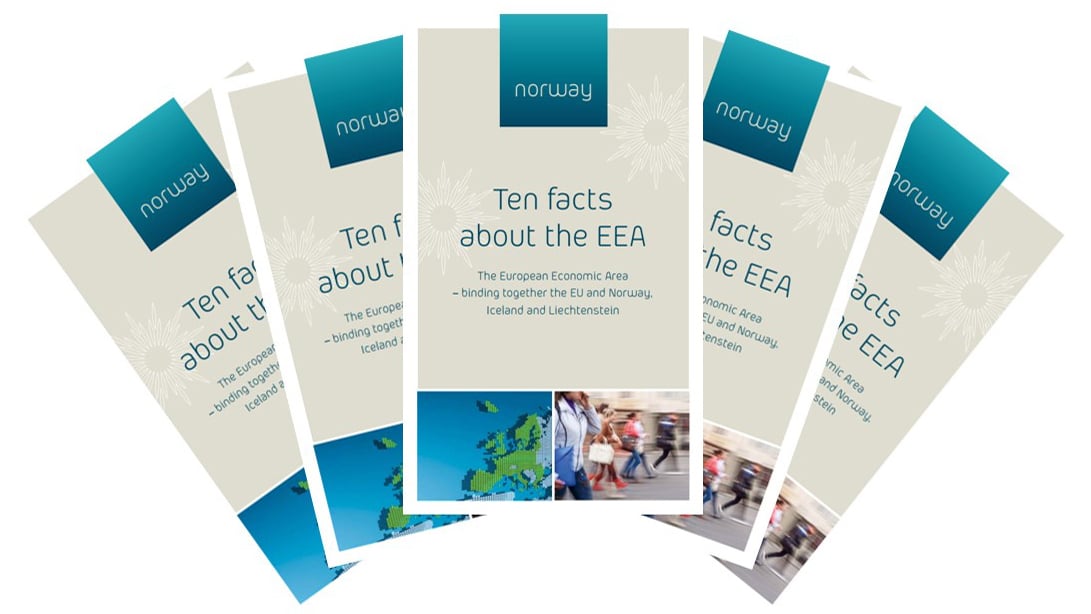
What is the EEA? Ten facts
1. What does EEA stand for?
EEA is short for the European Economic Area.
2. Who are members of the EEA?
The EEA consists of 31 countries: The 28 EU member states, plus Norway, Iceland and Liechtenstein. We refer to the latter three as the ‘EEA EFTA states’. (EFTA is the European Free Trade Association.) Switzerland is the fourth member of EFTA, but it is not an EEA member.
3. What exactly is the EEA?
Through the EEA Agreement, Norway, Iceland and Liechtenstein are equal partners in the internal market, on the same terms as the EU member states. This includes having access to the internal market’s four freedoms, the free movement of goods, persons, services and capital. In addition, the Agreement covers cooperation in other important areas such as research and development, education, social policy, the environment, consumer protection, tourism and culture.
4. When was it established?
The EEA Agreement was signed in 1992, and entered into force in 1994.
5. What is not covered by the EEA Agreement?
The EEA Agreement does not cover the EU common agriculture and fisheries policies, the customs union, the common trade policy, the common foreign and security policy, justice and home affairs or the monetary union.
6. Are the EEA EFTA states connected to the EU in any other ways?
Yes. The EEA EFTA states participate in many EU programmes and agencies. They are also members of the Schengen cooperation, which abolishes border controls between members. Norway also cooperates closely with the EU on foreign and security policy issues.
7. Does the EEA have its own institutions?
Yes. Common bodies such as the EEA Council and the EEA Joint Committee administer the EEA Agreement. Moreover, because the EEA EFTA states are not members of the EU, they are constitutionally not able to accept direct decisions by the European Commission or the Court of Justice of the European Union. Separate EEA EFTA bodies have therefore been set up that correspond to these EU bodies: The EFTA Surveillance Authority (ESA) and the EFTA Court.
8. Can the EEA Agreement be amended?
The EEA Agreement is dynamic in character. This means that it is continuously updated and amended to incorporate new internal market legislation in order to maintain common rules across the EEA.
9. How does enlargement of the EEA take place?
All new EU members shall apply to become party to the EEA Agreement.
10. What are the EEA and Norway Grants?
Norway provides funding to 15 EU countries in Central and Southern Europe through the EEA and Norway Grants. The aim of the Grants is to reduce economic and social disparities and strengthen bilateral relations.
Read more about the EEA Agreement